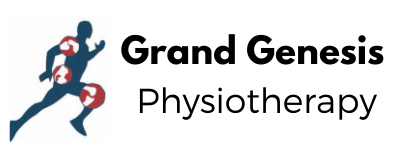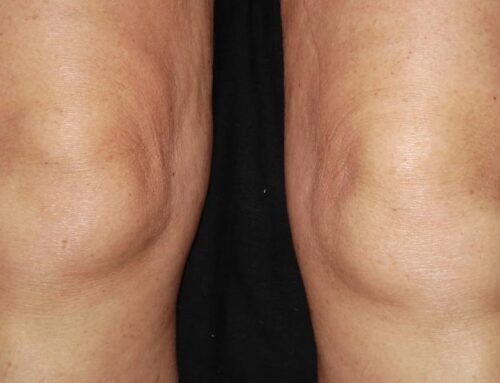The health benefits of massage therapy are well-documented, and a hand massage is no exception. Having your hands massaged feels good, it can help ease muscle tension, and it may even reduce pain.
Studies have shown that having a professional hand massage just once a week, and doing self-massage once a day, may help reduce the pain associated with many conditions, including arthritis, carpal tunnel syndrome, and neuropathy.
In this article, we’ll take a closer look at the benefits of a hand massage, and how you can massage your hands when they need some extra care.
What are the benefits of a hand massage?
A hand massage has the potential to improve your health and well-being in a number of ways. According to a 2011 studyTrusted Source, the benefits of a hand massage may include:
- reduced hand pain
- less anxiety
- better mood
- improved sleep
- greater grip strength
According to a 2018 studyTrusted Source, getting a regular massage may also help lower your blood pressure. This study, however, did not focus specifically on hand massages.
Another study published in 2015Trusted Source involved nurses working in intensive care units. It did not focus specifically on hand massages, but found that a twice-weekly general massage significantly reduced their stress levels.
A 2017 reviewTrusted Source found that massage therapy may be beneficial for a wide range of conditions, including:
- pain syndromes, including arthritis, carpal tunnel syndrome, and fibromyalgia
- high blood pressure
- autoimmune conditions, such as asthma and multiple sclerosis
- autism
- HIV
- Parkinson’s disease
- dementia
Let’s take a closer look at some of the hand conditions that research has shown may benefit from a hand massage.
Arthritis
Arthritis in your hands can be painful and debilitating. People with hand arthritis have 75 percent less strength in their hands than people who don’t have the condition. Simple tasks like opening a door or unscrewing a jar can be daunting or even impossible.
A hand massage has been shown to help. A 2011 studyTrusted Source found that participants had less pain and greater grip strength after a weekly professional hand message and daily self-message at home.
The same study also found that the massage therapy participants had less anxiety and depression, and better quality sleep at the end of the four-week study.
A 2014 studyTrusted Source found that applying a topical pain reliever after hand massage further increased the improvement in pain, grip strength, depressed mood, and sleep disturbances.
Carpal tunnel syndrome
Carpal tunnel syndrome causes pain, numbness, and weakness in the wrist. It’s a very common nerve disorder, according to the American College of Rheumatology, affecting up to 10 million Americans.
Massage therapy may help reduce carpal tunnel pain, as reported in a 2016 reviewTrusted Source. The review found that people with carpal tunnel syndrome who had regular massages reported lower levels of pain, anxiety, and depressed mood, as well as improved grip strength.
In another studyTrusted Source, participants with carpal tunnel syndrome got two 30-minute massages per week for six weeks. By the second week, there was a significant change in the severity of their symptoms and hand function. This study included hand trigger points.
Massage for carpal tunnel relief focuses on the wrist, but it may also include the arm, shoulder, neck and hand. According to the American Massage Therapy Association, this type of massage will vary, depending on the symptoms of the individual.
Neuropathy
Neuropathy is nerve damage that can cause pain in your hands and feet. It can also cause numbness, tingling, and other abnormal sensations. Massage may help by improving circulation and increasing blood flow to your extremities.
Diabetes is a common cause of peripheral neuropathy. Another common cause is chemotherapy for cancer. The chemotherapy drugs can cause nerve damage in the hands and feet.
A 2016 study of people undergoing chemotherapy reported that after one massage session, 50 percent of the participants reported an improvement in symptoms. The symptom that improved the most after the 10-week study was overall weakness.
A 2017 study focused on people with diabetic neuropathy who had massages with essential oils. The participants had three massages a week for four weeks. After four weeks, their pain was significantly decreased, and their quality of life scores were greatly improved.
Rheumatoid arthritis
A 2013 studyTrusted Source compared moderate pressure with light pressure massage for people with rheumatoid arthritis. The study focused on the upper limbs.
After a month of weekly massage therapy and daily self-massage, the moderate pressure massage group had greater improvement in pain, grip strength, and range of motion.
According to the American Massage Therapy Association, it’s best not to work on a particular joint that’s involved in a rheumatoid arthritis flare-up.
How to give yourself a hand massage
You don’t need any special equipment for an at-home hand massage. You can do the massage with or without applying oil, essential oils, or lotion.
To get the most benefits from a hand massage, it’s best to do it every day for at least 15 minutes. Try to use moderate pressure instead of light pressure, especially if you have hand pain.
Doing a hand massage before bedtime may improve the quality of your sleep. But a massage can be relaxing and beneficial at any time of day.
You may want to apply some heat to your hands and arms before you start to help your muscles relax. Then, take the following steps:
- Sit in a comfortable position. To apply moderate pressure, it may be easier to have one hand on a table while you use your other hand to do the massage strokes.
- Use your palm to stroke your forearm from the wrist to the elbow and back again on both sides. If you want to, you can extend the stroking to your shoulder. Do this at least three times on both sides of your forearm. The idea here is to warm up your muscles.
- Use your palm to stroke from your wrist to your fingertips on both sides of your hand. Do this at least three times. Use moderate pressure.
- Cup your hand around your forearm with your thumb underneath. Pinch your skin starting at the wrist, and work slowly up to the elbow and back down again. Do this on both sides of the forearm at least three times using moderate pressure.
- Use your thumb and forefinger — or your thumb and all your fingers — to press in a circular or back-and-forth motion, slowly moving up your hand and forearm. Do this on both sides of your arm and hand at least three times using moderate pressure.
- Press your thumb in a circular motion with moderate pressure all around the back of your hand and then your palm. Continue pressure with your thumb along both sides of each finger. Use your thumb to massage the area between your thumb and forefinger.
Depending on your condition, your doctor, physical therapist, or massage therapist may suggest specific massage techniques. If you have serious pain, you may want to check with your doctor about starting self-massage.
Tips for getting a professional massage
Getting a professional hand massage can provide added benefits, especially if you have a condition that massage has been shown to help.
To find a certified professional massage therapist who is right for you, you can:
- Ask your doctor to recommend a massage therapist for your type of condition.
- Check the American Massage Therapy Association’s locator service. You’re likely to find at least a few therapists in your area. Look for someone who has experience in hand massage.
- You can also check with the American Society of Hand Therapists for member therapists in your area.
- If you’re getting treatment for a particular condition, the association of specialists who treat that condition may also have a referral service.
- If there’s a local massage chain in your area, check with them about the qualifications and experience of their therapists, especially with regard to hand massage.
Some types of health insurance may cover massage, especially if your doctor refers you to a massage therapist for treatment. If you pay out-of-pocket, the cost can vary from $50 to $175 per session. It’s best to shop around, as prices can vary greatly.
When you have a professional hand massage, be sure to ask your therapist to show you how to do an effective self-massage routine at home.
The bottom line
Scientific evidence has shown that a regular hand massage may help ease pain, increase hand strength, and reduce feelings of stress and anxiety. Hand massage can complement treatments for arthritis, carpal tunnel syndrome, neuropathy, and other conditions.
A professional hand massage is a good investment for your overall health. And a daily self-massage routine can provide you with ongoing benefits.



